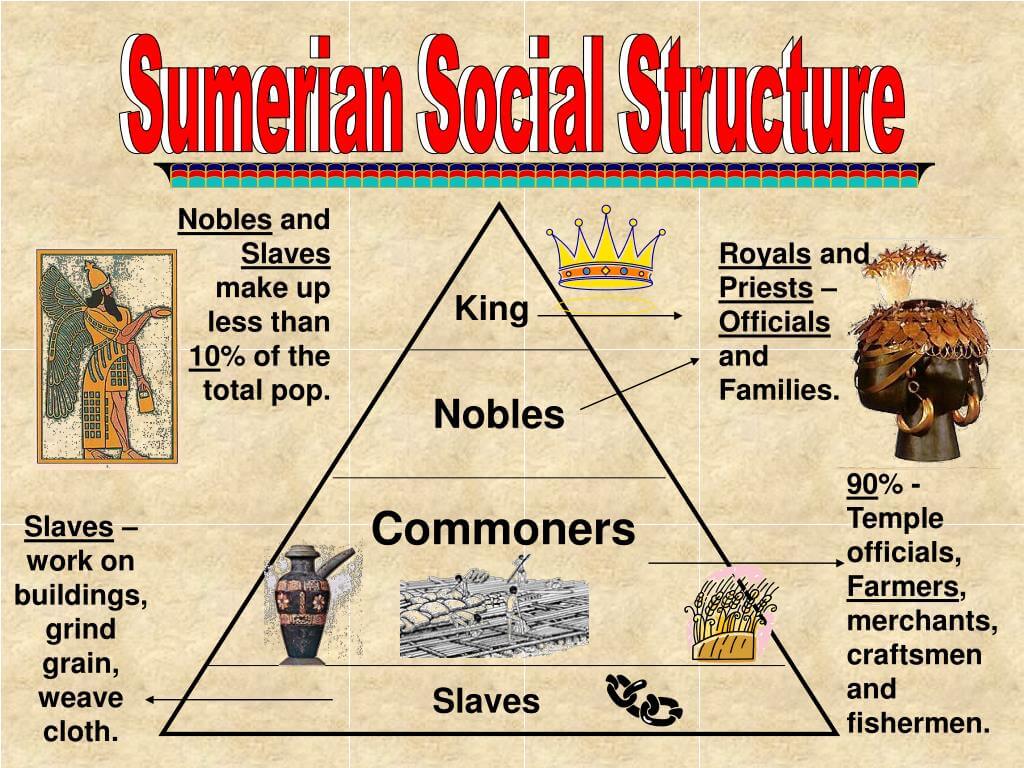The Sumerian civilization, one of the earliest known in human history, flourished in the fertile region of Mesopotamia around 4500 BCE. It is renowned not only for its groundbreaking innovations in writing, architecture, and governance but also for its intricate social structure. The Sumerians established a society that was distinctly hierarchical, comprising various social classes that defined individuals' roles and responsibilities. Understanding this social framework helps us appreciate the complexity of early human societies and their contributions to civilization.
The social stratification within the Sumerian civilization was pivotal in maintaining order and facilitating the development of their cities. At the pinnacle of this hierarchy were the ruling elites, including priests and kings, who wielded significant power and influence over the populace. Below them were the merchants and artisans, whose skills and trade contributed to the economy. The farmers and laborers formed the backbone of Sumerian society, toiling to provide sustenance for all. Each class played a unique role, demonstrating how interconnected their lives were in this ancient civilization.
As we delve deeper into the Sumerian civilization, it is crucial to ask: what were the characteristics of each social class? How did this social structure influence daily life? And what legacy did the Sumerians leave behind? This exploration will shed light on the multifaceted nature of Sumerian society and its enduring impact on subsequent civilizations.
What Were the Main Social Classes in Sumerian Civilization?
The Sumerian civilization had a social structure with different social classes, each defined by unique roles, responsibilities, and privileges. The main social classes included:
- 1. Nobility: Comprised the kings, priests, and high officials who held the most power.
- 2. Free Citizens: Included merchants, artisans, and landowners who contributed to the economy.
- 3. Peasants: Primarily farmers who supported the society through agriculture.
- 4. Slaves: The lowest class, often prisoners of war or debtors, who had no rights.
How Did Social Classes Affect Daily Life in Sumer?
The Sumerian civilization had a social structure with different social classes that significantly influenced daily activities. The nobility enjoyed luxurious lifestyles, residing in large homes, while free citizens often lived in modest dwellings. The peasants worked tirelessly in the fields, while slaves labored under harsh conditions with no personal freedom. This stark contrast in lifestyles shaped the cultural practices, religious beliefs, and social interactions within Sumerian society.
What Role Did Religion Play in Sumerian Society?
Religion was integral to the Sumerian civilization and played a vital role in their social structure. The ruling class often included priests, who acted as intermediaries between the gods and the people. Religious festivals and rituals were essential aspects of daily life, reinforcing the social hierarchy. The belief in divine favor dictated the rulers' authority, justifying their power over the lower classes.
How Did Economic Activities Influence Social Stratification?
The Sumerian civilization had a social structure with different social classes, heavily influenced by economic activities. Trade and craftsmanship allowed merchants and artisans to gain wealth, elevating their social status. As cities grew, the demand for goods and services increased, leading to a more defined class structure. The economy's prosperity contributed to the formation of a distinct middle class within the Sumerian hierarchy.
What Were the Rights and Responsibilities of Different Classes?
Each social class in Sumerian civilization had specific rights and responsibilities. The nobility enjoyed privileges such as land ownership and political power. In contrast, free citizens had the right to own property and engage in trade but were subject to taxation and military service. Peasants worked the land and were obligated to pay a portion of their harvest to the ruling class. Slaves had no rights and were considered property, often subjected to harsh treatment.
How Did the Sumerian Social Structure Evolve Over Time?
Throughout its history, the Sumerian civilization experienced changes in its social structure due to various factors, such as warfare, economic shifts, and environmental changes. As city-states rose and fell, the balance of power among social classes fluctuated. For instance, during times of conflict, many free citizens could find themselves relegated to lower classes, while successful merchants could ascend the social ladder, demonstrating the dynamic nature of Sumerian society.
What Legacy Did the Sumerian Social Structure Leave Behind?
The legacy of the Sumerian civilization had a profound impact on subsequent cultures and societies. Their social structure laid the groundwork for future civilizations in Mesopotamia and beyond. The concepts of governance, law, and social organization established by the Sumerians influenced later empires, such as the Akkadians and Babylonians. Additionally, their advancements in agriculture, writing, and trade would resonate throughout history, shaping the development of human civilization as we know it today.
In conclusion, the Sumerian civilization had a social structure with different social classes that played a crucial role in shaping their society. Understanding this hierarchy allows us to appreciate the complexities of early civilizations and their enduring legacies. From the nobility to the slaves, each class contributed to the intricate tapestry of Sumerian life, showcasing the importance of social organization in human history.
You Might Also Like
Chhaya Ravjiani: The Melodic Muse Of Indian MusicExploring Errol Musk's Net Worth: The Man Behind The Musk Legacy
Dude Perfect Net Worth: Unveiling The Financial Success Of YouTube's Favorite Tricksters
Unlocking Savings: The Ultimate Guide To PSA Discount Codes
Exploring Paul Mescal's Potential Role In Game Of Thrones
Article Recommendations
- Madison Beer Leaks
- Nicolas Cage Progressive Commercial
- Maddie T Mad Dog Tracy
- Marlon Brando Kids 4635733
- Madison Beer Jerk Off Challenge
- Jos4_0.xml
- Is Patrick Mahomes Gay
- Xxx Tentacion Real Name 2024
- Sir Carter
- Zachirific


